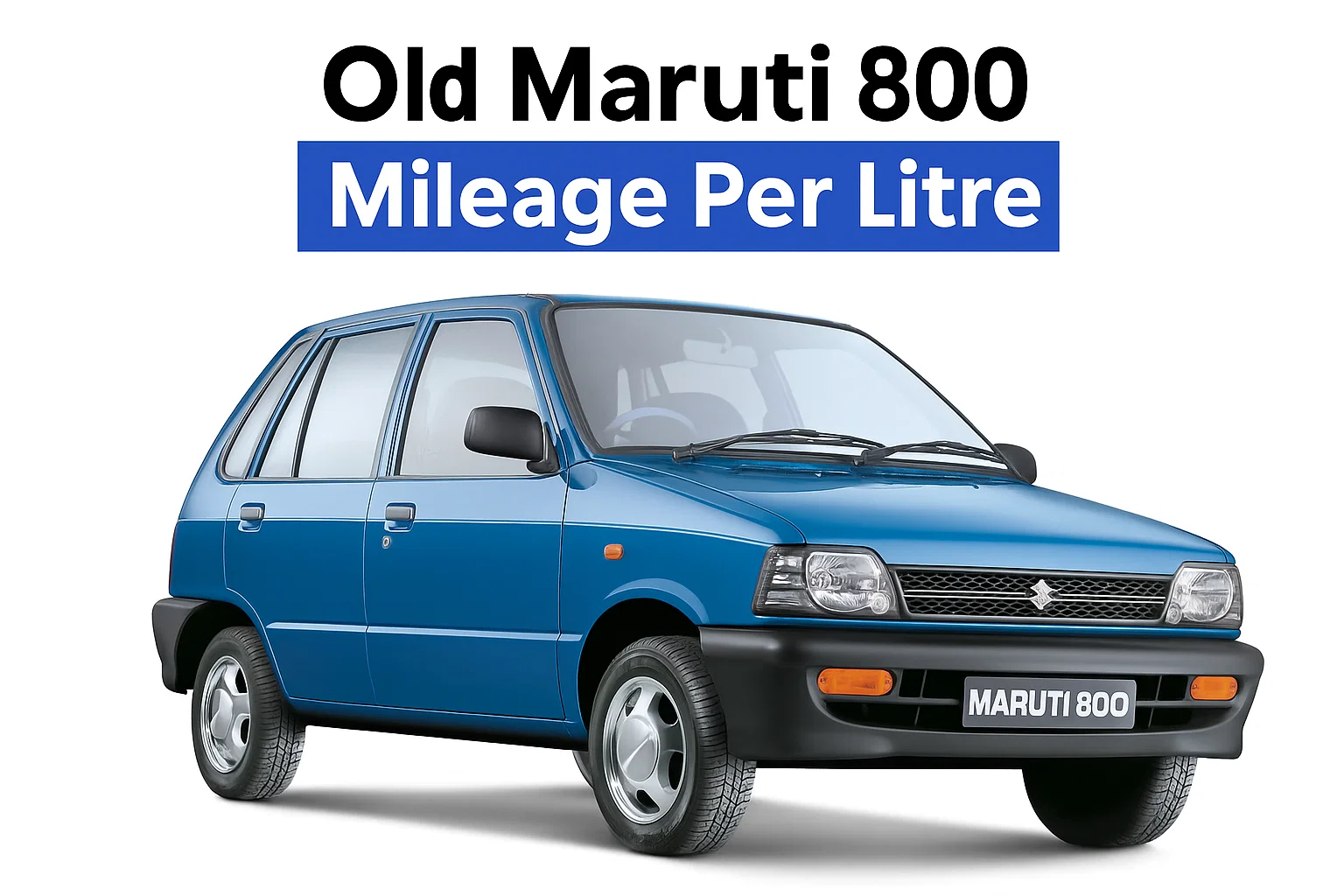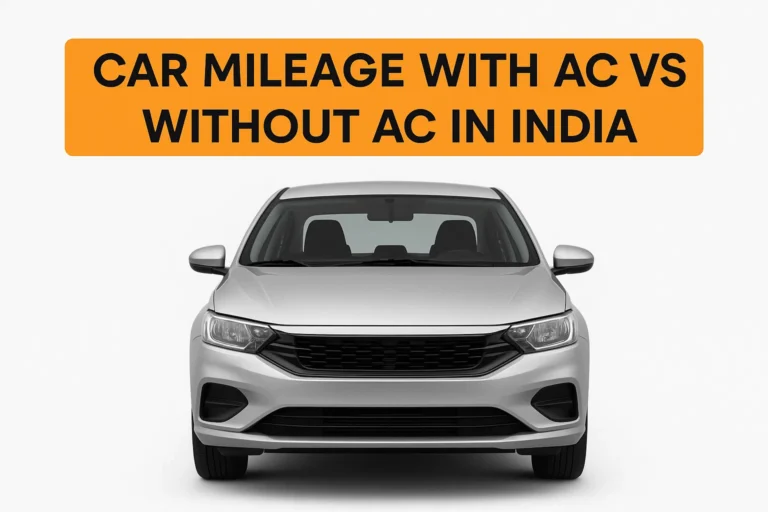Old Maruti 800 Mileage Per Litre India’s First People’s Car
When we talk about cars in India, the first name that comes to mind for many people is the Maruti 800. This little car is more than just a vehicle – it is a part of Indian history. From the mid-1980s to the early 2000s, the Maruti 800 was everywhere. It was the car that changed the way Indian families traveled. Affordable, easy to drive, and extremely fuel-efficient, the 800 became the dream car for millions.
Even though production stopped in 2014, people still ask one common question: “What was the mileage of the old Maruti 800 per litre?” In this blog, we will explore this in detail, along with its history, variants, owner experiences, and why this small car left such a big impact.
A Brief History of Maruti 800
The Maruti 800 was first launched in 1983, and it instantly became a revolution. At that time, most cars in India were bulky, expensive, and not fuel-efficient. The arrival of the Maruti 800 changed everything – it was small, modern, affordable, and gave excellent mileage.
For more than 30 years, the car ruled the Indian roads. Over 2.5 million units were sold in India, making it one of the most successful cars ever. It was often called the “people’s car” because almost every middle-class family in the 80s and 90s dreamed of owning one.
It was discontinued in 2014 due to stricter safety and emission norms, but even today, you can see many old Maruti 800s running smoothly on Indian roads.
Engine and Variants of Maruti 800
The Maruti 800 was powered by a 796cc petrol engine – a very small engine by modern standards, but perfect for its size and purpose.
- Carburetor engine (1983–1999) – Early models had a simple carburetor system.
- MPFI (Multi Point Fuel Injection) engine (2000–2014) – Later models were upgraded to fuel injection for better performance and cleaner emissions.
- Transmission – Most models came with a 4-speed manual gearbox, while later ones also had a 5-speed version.
- CNG & LPG Variants – Introduced later for people who wanted even cheaper running costs.
The small 796cc engine produced around 37 bhp power, which may sound less, but since the car weighed just around 650–700 kg, it was more than enough for daily city use.
Mileage of Old Maruti 800
The main reason for Maruti 800’s success was its fantastic fuel efficiency. Let’s look at mileage figures over the years:
1. Carburetor Models (1980s–1990s)
- City mileage: around 14–16 kmpl.
- Highway mileage: around 17–18 kmpl.
2. MPFI Models (2000–2014)
- City mileage: around 16–18 kmpl.
- Highway mileage: around 20–22 kmpl.
3. CNG / LPG Variants
- CNG mileage: around 22–25 km per kg.
- LPG mileage: slightly lower than petrol but still economical.
Even by today’s standards, these figures are impressive. Modern small cars like Alto or WagonR give a similar mileage, which shows how fuel-efficient the 800 was.
Why Was the Maruti 800 So Fuel Efficient?
There were a few key reasons why the mileage of Maruti 800 was so good:
- Lightweight body – Weighing under 700 kg, the car didn’t need much fuel to move.
- Small 796cc engine – Compact engine meant lower fuel consumption.
- Simple design – No complicated electronics or heavy parts.
- Easy to maintain – Regular tuning kept it in top condition.
It was a car built with practicality in mind. Nothing extra, only what was needed – and that’s why it became a legend.
Real-World Mileage Reports from Owners
Even today, if you talk to old Maruti 800 owners, they will proudly say that the car gave them excellent mileage. Some examples:
- Many reported 18–20 kmpl consistently with proper maintenance.
- On highways, careful drivers could touch 22 kmpl.
- CNG owners often said the car gave them ₹2–₹3 per km running cost, which was very cheap.
The best part was that the mileage stayed consistent even after years of use, as long as the car was serviced properly.
Tips to Get Better Mileage from an Old Maruti 800
Even though production has stopped, many people still use their Maruti 800 as a second car or city runabout. If you own one and want better mileage, here are some tips:
- Regular servicing – Change engine oil, clean spark plugs, and tune carburetor/MPFI regularly.
- Use genuine parts – Local parts may reduce efficiency.
- Maintain tire pressure – Low pressure increases fuel consumption.
- Smooth driving – Avoid sudden acceleration and braking.
- Light load – Don’t overload the small engine.
These simple steps can keep the old Maruti 800 running efficiently even today.
Maruti 800 vs Modern Small Cars (Mileage Comparison)
It’s interesting to compare the Maruti 800 with today’s small cars.
| Car Model | Mileage (kmpl) | Engine Size |
|---|---|---|
| Maruti 800 (MPFI) | 16–22 | 796cc |
| Maruti Alto 800 | 18–22 | 796cc |
| WagonR | 19–21 | 1.0L |
| Tata Nano | 20–22 | 624cc |
| Hyundai Eon | 18–21 | 814cc |
As you can see, even though it was discontinued years ago, the Maruti 800’s mileage still matches modern hatchbacks.
Pros and Cons of Maruti 800
Pros
- Excellent fuel efficiency.
- Very low running and maintenance cost.
- Compact size, perfect for city driving.
- Extremely reliable engine.
- Affordable spare parts.
Cons
- Low power output (not good for highways with full load).
- Safety features missing (no airbags, ABS in older models).
- No modern comforts like AC or power steering in base models.
- Outdated design by today’s standards.
Why People Still Love the Maruti 800
Even after so many years, the Maruti 800 has a special place in the hearts of Indians. For many families, it was their first car. It gave them freedom, comfort, and the ability to travel together.
- Some people still keep it as a nostalgic treasure in their garage.
- Others continue to use it as a daily city car because it is reliable and cheap to run.
- And almost everyone remembers sitting in one at some point in their life.
The mileage was just one part of the story. The real success of Maruti 800 was that it gave millions of Indians the joy of owning a car.
FAQs
It gave around 14–18 kmpl depending on the model and maintenance.
It gave around 22–25 km per kg of CNG.
The fuel tank was around 28–30 litres.
Yes, many still use it for city runs, but it lacks modern safety features.
It was stopped in 2014 due to stricter safety and emission rules.
Conclusion
The Maruti 800 was not just a car, it was a movement. It gave India a new way of life – affordable mobility. With a mileage of 16–22 kmpl, low maintenance costs, and a reliable engine, it became the car of the common man.
Even today, people remember it with love and respect. Whether you look at its mileage per litre, its practicality, or its history, the Maruti 800 will always remain an icon of Indian roads.







